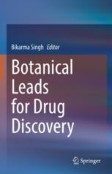Search
Search Results
-
Intermittent normobaric hypoxia facilitates high altitude acclimatization by curtailing hypoxia-induced inflammation and dyslipidemia
Intermittent hypoxic training (IHT) is a discrete cost-effective method for improving athletic performance and high altitude acclimatization....

-
Respiratory responses to hypoxia during rest and exercise in individuals born pre-term: a state-of-the-art review
The pre-term birth survival rate has increased considerably in recent decades, and research investigating the long-term effects of premature birth is...

-
Changes in cardiac function following a speed ascent to the top of Europe at 4808 m
PurposeBoth prolonged exercise and acute high-altitude exposure are known to induce cardiac changes. We sought to describe the cardiac responses to...

-
NR3C1 gene polymorphisms are associated with high-altitude pulmonary edema in Han Chinese
BackgroundHigh-altitude pulmonary edema (HAPE) is a life-threatening form of non-cardiogenic edema which occurs in unacclimatized individuals after...

-
Protective role of estrogen against excessive erythrocytosis in Monge’s disease
Monge’s disease (chronic mountain sickness (CMS)) is a maladaptive condition caused by chronic (years) exposure to high-altitude hypoxia. One of the...

-
Hypobaric hypoxia triggers pyroptosis in the retina via NLRP3 inflammasome activation
Hypobaric hypoxia initiates multiple impairment to the retina and is the major cause contributing to retinal function deficits such as high altitude...

-
Saliva Proteomics as Non-Invasive Application for Biomarker Studies
Nowadays, saliva being a source of broad-spectrum biomolecules (mainly proteins, lipids, hormones, and nucleic acids that originated from various...
-
Effect of a speed ascent to the top of Europe on cognitive function in elite climbers
PurposeThe combined effects of acute hypoxia and exercise on cognition remain to be clarified. We investigated the effect of speed climbing to high...

-
Steady-state cerebral blood flow regulation at altitude: interaction between oxygen and carbon dioxide
High-altitude ascent imposes a unique cerebrovascular challenge due to two opposing blood gas chemostimuli. Specifically, hypoxia causes cerebral...

-
Species of the Genus Selinum Found in the Western Himalayas
Selinum is a confounded genus in the flora of both the Himalayas and China, where it is found in large numbers. In India, as well as other regions of...
-
Adaptative mechanism of the equilibrative nucleoside transporter 1 (ENT-1) and blood adenosine levels in elite freedivers
PurposeLong static or intense dynamic apnoea-like high-altitude exposure is inducing hypoxia. Adenosine is known to participate to the adaptive...

-
Evaluating apolipoprotein E genotype status and neuroprotective effects against white matter hyperintensity development in high-altitude careers
ObjectiveThis study considers the use of a rapid molecular assay to evaluate apolipoprotein E ( ApoE ) status in military subjects who have been...
-
Hypoxia and standing balance
PurposeStanding balance control is important for everyday function and often goes unnoticed until impairments appear. Presently, more than 200...

-
Phytochemistry and Pharmacological Activities of Rhodiola imbricata Edgew., a High Value Medicinal Herb of Cold Desert Himalaya
This present review deals with chemical constituents, biological activities and traditional uses of Rhodiola imbricata Edgew. in traditional and...
-
Sleep, Brain, and Stress
The brain regulates adaptations to the body driven by behavioral states like waking and environment. These physiological changes support adaptive...
-

-
Hypoxic-induced resting ventilatory and circulatory responses under multistep hypoxia is related to decline in peak aerobic capacity in hypoxia
BackgroundSeveral factors have been shown to contribute to hypoxic-induced declined in aerobic capacity. In the present study, we investigated the...

-
Targeting Carbonic Anhydrase Isozymes in the Treatment of Neurological Disorders
Carbonic anhydrases (CAs) are widely expressed in the nervous system where they play important physiological roles. In the brain and other parts of...
-
Load carriage physiology in normoxia and hypoxia
PurposeTo determine the effects of load carriage in normoxia and normobaric hypoxia on ventilatory responses, hemodynamics, tissue oxygenation, and...

-
Individual variations and sex differences in hemodynamics with percutaneous arterial oxygen saturation (SpO2) in young Andean highlanders in Bolivia
BackgroundMany studies have reported specific adaptations to high altitude, but few studies have focused on physiological variations in high-altitude...

